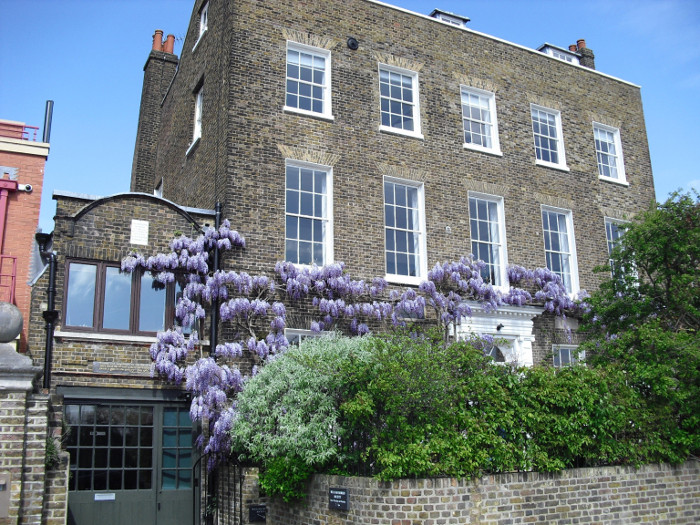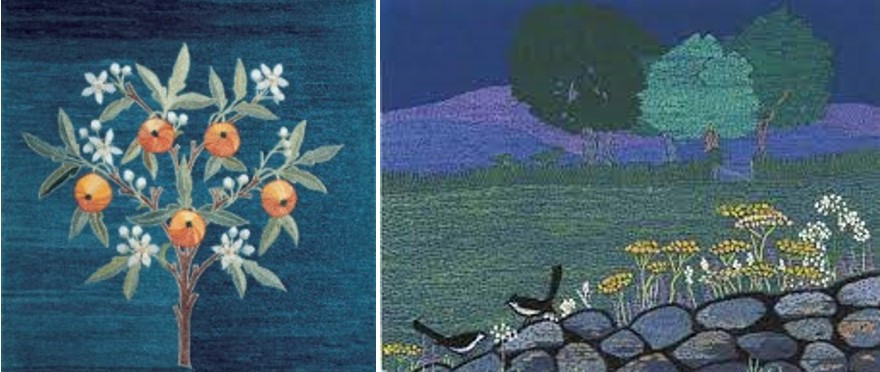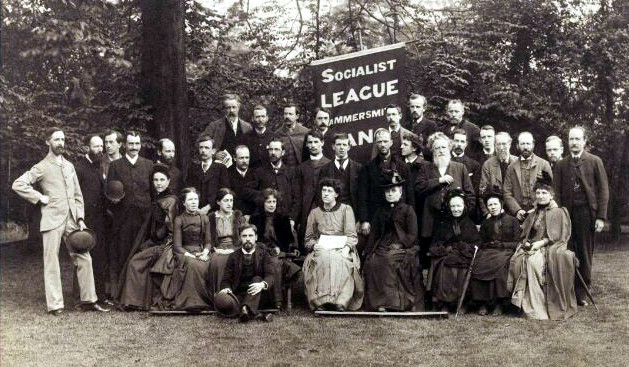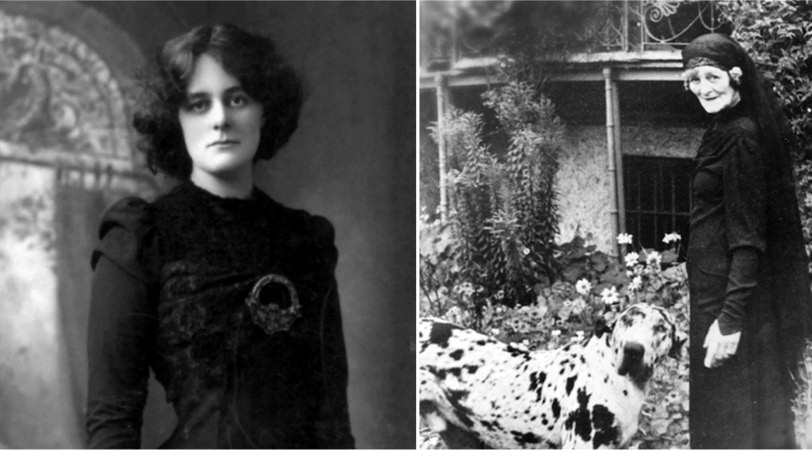Kelmscott House
Location 10


William Morris’s Kelmscott House, where Lily Yeats worked as an embroiderer, was a hive of Arts-&-Crafts industry. But it was also a hub for political discussion.
Yeats met Morris in Dublin in 1886 and, on his return to London, quickly became part of Morris’s Sunday “Socialist League” gatherings, in the coach house to the left of the main house. There he joined a political circle that included Bedford Park’s Ukrainian exile Sergius Stepniak, Russian prince Peter Kropotkin, Eleanor Marx, daughter of Karl, and two Irish socialists, the playwright George Bernard Shaw, and Annie Besant who would become the first woman President of the Indian National Congress.
Morris had a little bell which he rang to interrupt overlong speeches: unfortunately Yeats found he was always just getting going when the bell would suddenly ring!
Many of the same activists also attended Bedford Park Club debates, including those on Indian Independence and Irish Home Rule, as did occasional visitors such as Roger Casement and John O’Leary.
Now Yeats didn’t become a socialist, although he took the workers’ side in the 1913 Dublin Lock-Out, and praised socialist and trade-union leader James Connolly for his sacrifice in the Easter Rising.
Yeats’s real conversion to the Irish cause came through Maud Gonne who arrived at Blenheim Road with an introduction from John O’Leary on 30th January 1889. Yeats says that was when the troubling of my life began, and he spent the next thirty years longing for Maud.
And just as his love of Irish landscape, legends and folklore came from his mother, and his engagement with drama was triggered by his friendship with Florence Farr, so his interest in the Home Rule movement was motivated by his admiration for Maud Gonne’s striking presence and her red-gold hair as much as for her fiery politics.
In the end Maud married Major John MacBride, whose Irish nationalism led to his execution after the Easter Rising in Dublin.
None of which Yeats could have foreseen when he identifies himself at age twenty-five, as the one man who “knew the pilgrim soul” in Maud, who knew her restless political zeal, her desire to right wrongs. He portrays himself as the one suitor whom, years later, perhaps on reading a book of his poetry, Maud would regret having rejected!

